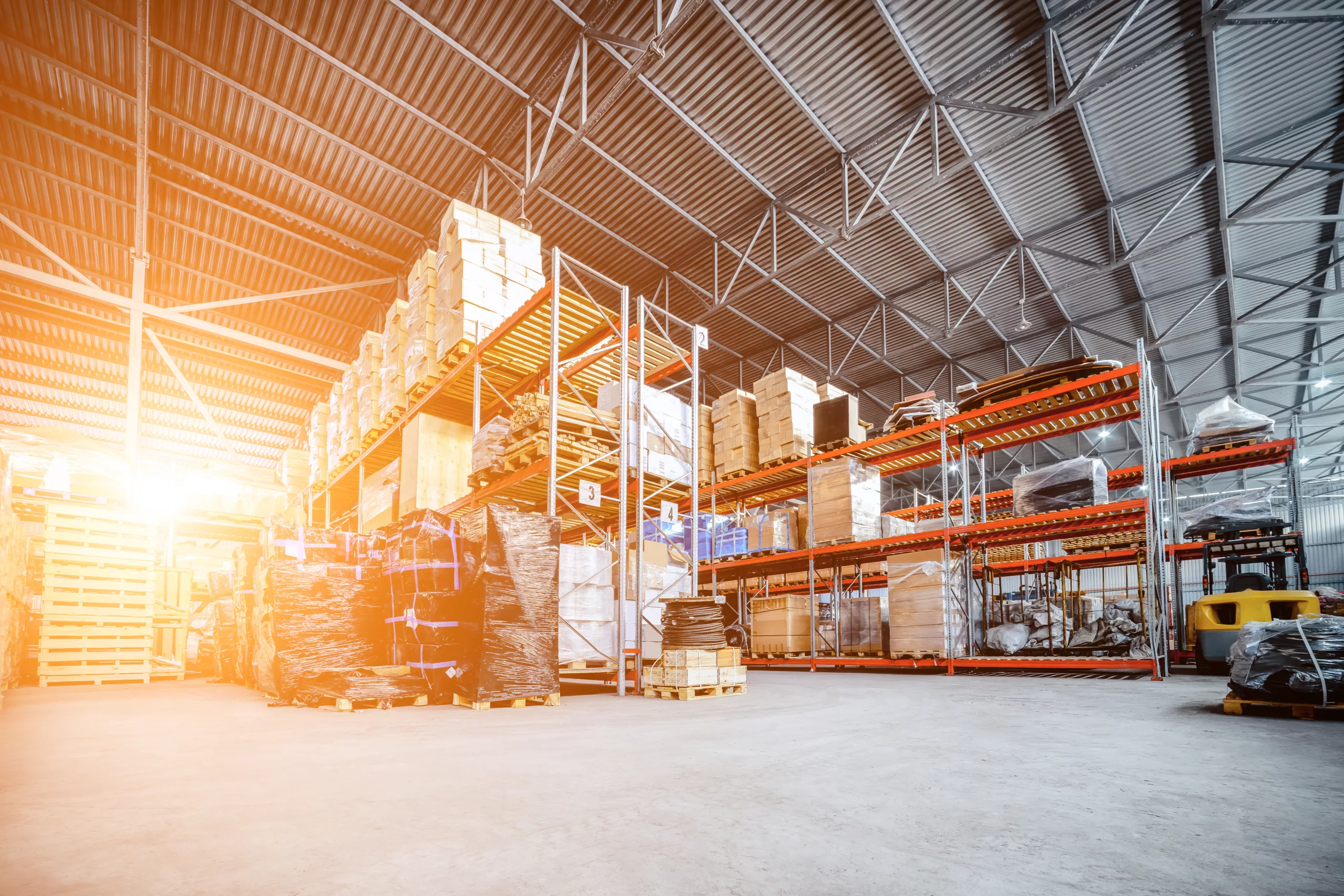5 ways to reduce operating costs with packaging

The stakes are high in 2023 to ensure that your business operates competitively by keeping costs down.
Have you ever considered the role packaging can play in your operating costs? It might be bigger than you think.
We estimate that 90% what packaging costs your business could be hiding behind the unit price you pay packaging materials.
This week, we’re going to be looking at why businesses want to keep operating costs down, how packaging can lower operational costs and 5 ways to reduce operating costs with packaging.
- 1.
- 2.
- 3.

Why businesses want to keep operational costs down
So, before we jump into how packaging can lower operating costs, lets consider why many businesses are looking to trim the fat more than ever before. In our Packaging Trends for 2023 blog, we identified cost reduction as the top trend – ad there are multiple factors driving it:
A challenging inflationary landscape
Inflation is on the rise. In fact, we’re facing one of the most challenging inflationary landscapes the UK has seen for 40 years. The consumer price index is exceeding economists’ expectations with food prices at a 10 year high.
Contracting markets post-pandemic coupled with labour shortages
In a post-pandemic world, markets are changing. Online Retail sales steadily declined throughout 2022 following the huge growth experienced during the pandemic, with manufacturers also experiencing shrinkage this year, the Make UK/BDO Q4 Manufacturing Outlook survey (Formerly EEF – Engineers Employers Federation) shows manufacturing is forecasted to contract by a further -3.2% in 2023. On top of this, many businesses are struggling with labour shortages, with vacancies at an all time high in 2022. Lack of viable labour has been compounded by changes to freedom of movement and industry specific impacts following Brexit.
The impact of political upheaval
Companies are still being impacted by political upheaval in the UK, as well as the war in Ukraine too. Raw material availability is still turbulent, impacting supply chain availability and increased fuel prices mean transport costs are under strain too.
With this in mind, what should businesses looking to protect their margins and save money be doing this year?

How to reduce operating costs with packaging
Successful businesses are always scrutinising costs – cost savings play a vital role in delivering not only a competitive edge, margin protection and healthy profits, but employee job security too.
If you’re looking to implement operational savings in 2023, a review of the packaging you are currently using could unlock the ability to reduce your operational costs.
When you take a fresh look at your packaging there is the potential to maximise production throughput and logistics fleet utilisation. These can help to free up cash-flow, reduce operating costs and material use, and cut your carbon footprint.
Rethinking your packaging could help you to increase operational throughput with your current team head count, tackling labour shortages as well as cost control.
Here are five ways to reduce your operational costs with packaging, and we’re going to start with one that perhaps you hadn’t considered:
1. Reducing the cost of logistics
Thoughtfully tailored packaging supplies can make an entire logistics chain run more efficiently. Whether you are shipping on your own vehicles or working with a courier!
By ensuring your products are being packed to deliver the best possible cubage, you can increase vehicle payload, reduce the amount of space required for shipments and reduce fuel use, as well as vehicle runs. This can help you cut operating costs associated with your fleet or the costs you pay to your delivery partner.
By running changes through the Packaging Optimiser, (unique to Macfarlane Packaging), it can help you to calculate cubage improvements in terms of vehicle space savings. For example, how much less space you’ll need on a 7.5 tonne courier vehicle if you reduce your box size by just 2cm. This gives you a great bargaining tool to renegotiate those courier contracts!
The same applies to palletised goods – if you can maximise the number of products on a pallet, you can reduce the number of pallets you need to buy as well as vehicle runs this not only reduces costs but your operational carbon footprint too. It’s a win for businesses and the environment! The Packaging Optimiser not only does the calculations on vehicle space and runs, but it also provides you with an estimated reduction in your fuel use and CO2e.
2. Reducing the cost of procurement
If you are purchasing your packaging from multiple suppliers, it may be a good time to consider a switch to a supplier who can provide all the packaging products that you are purchasing.
CIPS (the Chartered Institute of Procurement and Supply) have calculated the average costs of a purchase order at £50 per time and the cost to manage suppliers at £1500 each.
The PO calculation considers order management, invoices, utility and labour costs – if you walk through the process at your operation, you may identify a higher (or lower) cost.
Multiple purchase orders and suppliers also leads to increased handling. Goods can arrive in several batches on different vehicles – increasing warehouse handling to put away the goods and process paperwork. Purchasing packaging stock directly from manufacturers may also mean that you are purchasing vast amounts of packaging to get the best price. This means that your cashflow is tied up as you are paying for goods before you need them. Consider switching to a distributor who can secure a competitive price but deliver and invoice you for the goods only when you need them. Another great way to control your operating costs.
3. Reducing the cost of warehousing
Warehouse space is in high demand and rental costs are high. Your warehouse operating costs can be particularly high if you are storing your packaging onsite. Essentially you are probably paying a premium to store a relatively low value product.
There are three key things to consider when reviewing the space taken up by your packaging.
- Is the packaging too bulky? If so, there may be an opportunity to switch to packaging that’s smaller and/or lighter. This could apply to items such as polystyrene, timber or large die-cut packs. There is probably an option out there that could take up less storage space but deliver the same level of protection.
- Could the packaging be palletised more effectively? The type of cardboard box designs you’re using might not be easy to palletise effectively, depending on the FEFCO style. Swapping to a different design that considers the cut of the board can ensure optimised palletisation, increasing the number of units per pallet lowering your storage needs.
- Could your packaging be stored off-site? Distributors, like Macfarlane Packaging, offer packaging inventory management. This means taking storage of material off-site and delivering your packing supplies only when needed. This reduces the cost of storage and frees up space to store more high value goods, enables you to sub-let space or move to smaller premises.
4. Reducing the cost of the packing process
Labour shortages are making it challenging to recruit new team members and time isn’t a commodity you can buy. So, it’s crucial that you find new ways to unlock more hours in the day to better utilise the existing team you have while keeping operational costs in check.
Packaging can often be the key to increasing throughput and managing the same (or increased) operational demand with existing team members. Even the simplest of switches can reduce the time taken to pack. Reducing pack times gives you the ability to do more in less time and repurpose team members in other areas of the business.
Here are three quick examples to demonstrate the benefits of packaging switches:
- Reducing taping time – if you’re shipping products using 0201 cartons, your team could be spending up to 60% of their time applying tape. You could consider:
- A switch to an electronic tape machine, which speeds up tape application and reduces the time to pack considerably.
- A move to a carton erector and automatic taper, which means your team can focus only on filling the box and pack more cases per hour.
- A move to a crash-lock box with self-seal lid, removing the need to apply tape altogether and delivering increased capacity to your packing operators.
- Reduce pallet wrapping time – if you’re manually packing out more than 15 pallets per day, it could be time consider a switch to a pallet wrapper machine. Whilst the machine wraps the pallet, your operator is free to move the previous pallet into location and collect the next one to wrap, speeding up the goods-out process.
- Timber crate replacement – if you’re shipping high value industrial equipment in timber crates, it’s time for a rethink. Crates can be labour intensive to build, load and close – not to mention the health and safety impact of hammers and nails! Replacing timber with heavy duty corrugate and foam solutions can deliver the same high levels of protection but in just a couple of minutes. This switch they also reduce your shipping weight too, further cutting your associated transport costs.
5. Reducing the cost of packaging materials
Many businesses go to a tender process to review savings on packaging materials requesting like for like quotes. However, if you’ve repeatedly shaved a few pence of each item, where do you go when you need to reduce operating costs further? How much juice can you squeeze from the packaging lemon?
A packaging review may be the answer – it will help you to analyse the materials you are using and potentially deliver re-engineering opportunities to pack size, material thickness or material switches. For example, a knock-on effect of optimised parcel cubage we highlight in logistics cost savings, is that you may be removing the need for void fill and the amount of packaging material used, thus reducing costs even further.

Identifying the opportunities for cost reduction
At Macfarlane Packaging we use the Packaging Optimiser to help us identify opportunities for operational cost reduction for customers.
The first industry tool of its kind, it uses bespoke software to clearly demonstrate the potential savings that the correct packaging solution can have on any supply chain. It allows our team to work collaboratively with customers to investigate potential opportunities for savings, from packaging materials, storage, and productivity, through to reducing damages & returns, and delivery fleet utilisation.
If you’re interested in working with a packaging supplier who can deliver cost reductions throughout your operation, why not contact us today? Our team are on hand to support you with controlling your operating costs in 2023.
